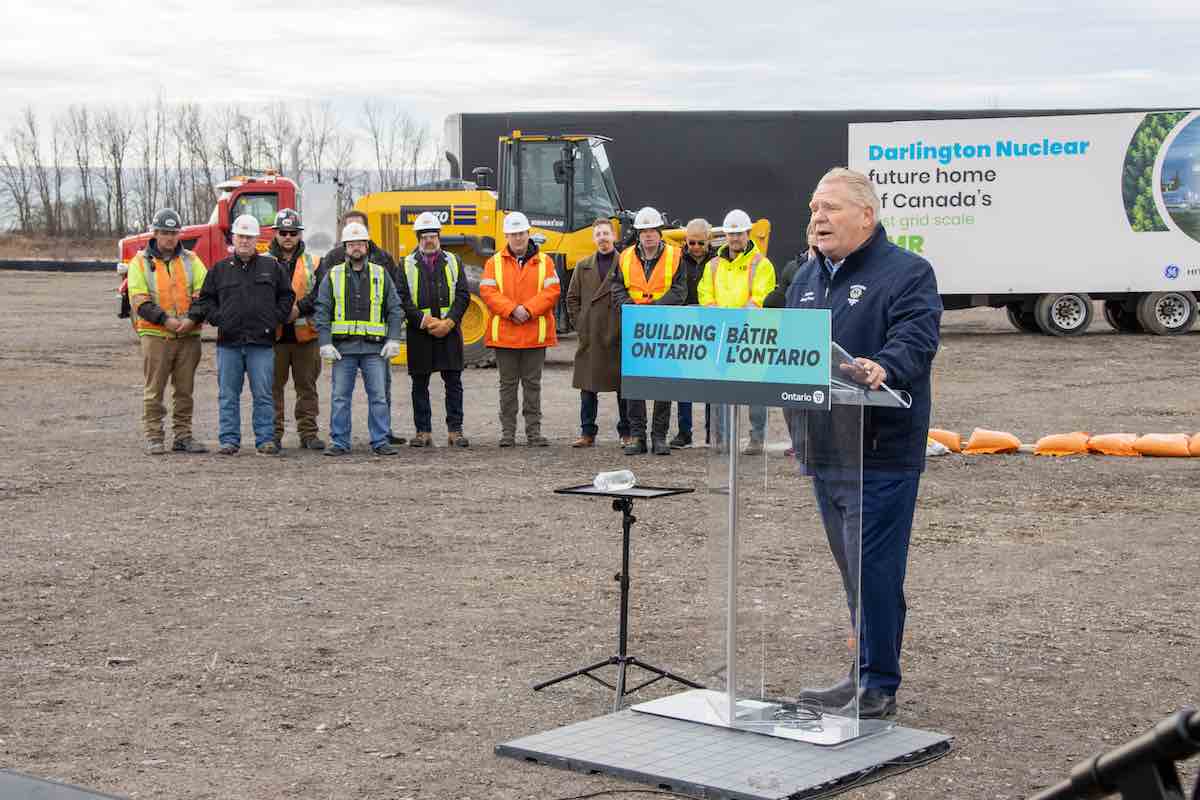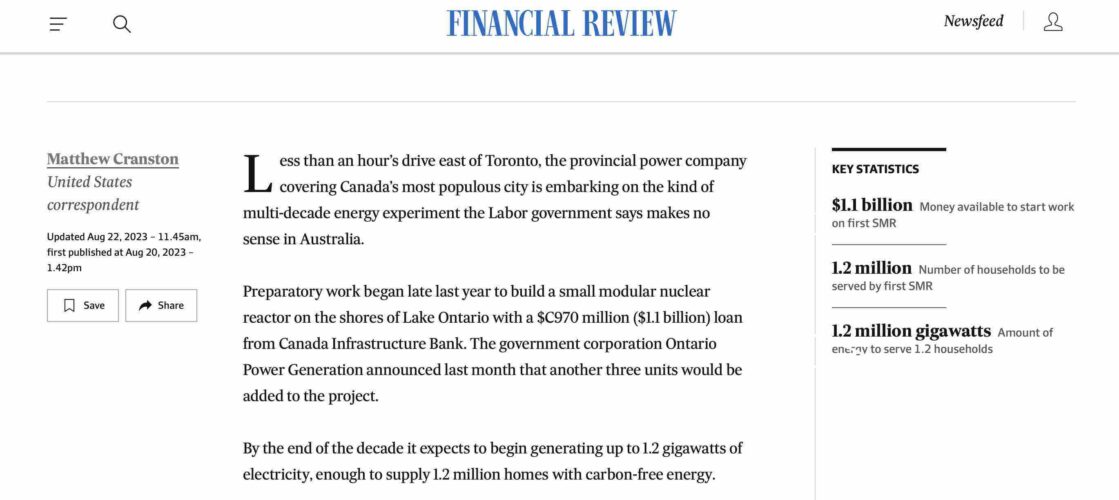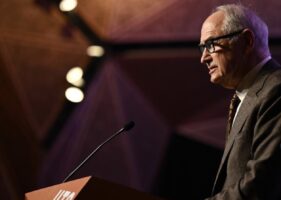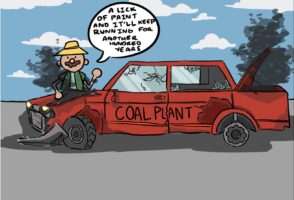The Australian Financial Review has been trying to make a big thing about nuclear power, and small modular reactors in particular. But it seems its ideological enthusiasm for the technology is trumping its fact checking capabilities.
To read the AFR series you’d be forgiven for thinking that SMRs already exist in western grids. Everything is in the present tense, as though the machines are already operating, or in commercial production.
Of course, that’s not the case. The first SMRs are unlikely to be built much before the end of the decade, and it could be years after that before they represent a commercial alternative, if then.
But it’s not just the fake tenses that detract from the AFR’s journalism, it’s the facts, or the lack of them, that grate the most.
Let’s take the latest instalment on the progress of SMRs in Canada, written by the paper’s Washington correspondent. We’ve taken a screen shot of the opening paragraphs of the online article above.
“By the end of the decade it (the Ontario government utility) expects to begin generation up to 1.2 gigawatts of electricity, enough to supply 1.2 million homes with carbon-free energy,” it proclaims.
Er, no. The minister’s statement announcing the expanded program of a single 300MW SMR to four SMRs totalling 1.2GW makes it very clear that the three additional units won’t be online until 2034 or 2036.
That means, by the end of the decade, there might be one, sized at 300MW and it will only serve 300,000 customers.
That’s important because the nuclear fan club likes to make out the SMRs are not far away and mass deployment is at hand, and that we – Australia – can afford to stop wind and solar and wait.
But it’s clear that even in Canada – one of the biggest and most established users of nuclear in the world, with all the experience and regulatory and grid infrastructure – the authorities can’t see a second unit coming on line until the mid 2030s.
That misinformation certainly fooled the person responsible for the “key statistics” box on the right hand side of the AFR article (above) – which is designed to be a ready reference for those not bothered to read the article itself and in this case is completely misleading.
It tells readers that 1.2 million households will be served by the first SMR. No they won’t. The official release makes clear it is 300,000.
The key statistics box in the AFR article says there will be a total of 1.2 million gigawatts of nuclear. No, just 1.2 gigawatts, eventually. That’s one million times less than what is claimed by the AFR. Maybe just a blooper. But it is more than just a few zeros.
Why does this matter? It’s lazy journalism, bad editing, and is typical of the inflated hopium of the nuclear booster industry.
It’s perhaps telling that the only US politician the AFR quotes in support of nuclear is Vivek Ramaswamy – who shares conspiracy theories about 9/11, blames the recent Hawaii bush fires on “woke water” policies, and reckons Donald Trump has been the greatest US president of the 21st Century.
Ramaswamy, like the other seven Republican candidates in their primary debate this week, did not put his hand up when asked if he accepted climate science. “The climate change agenda is a hoax,” he added. Climate denial and nuclear boosterism often go hand in hand, because it is essentially about a delay to renewables.
Ramaswamy went further: “Unlock American energy, drill, frack, burn coal, embrace nuclear,” he declared. And this is the AFR’s go-to man in the US to push the nuclear argument.
Some might argue Ramaswamy’s “drill, frack and burn” mantra could be a fair summary of the AFR’s own view of the world. It’s not a view that is shared by the bulk of its business readers.
But neither is nuclear – it’s a marginal proposition at best. The Australian energy industry has looked its costs and decided no thanks, it’s too slow and too expensive. As the former head of the US nuclear regulatory commission observed, the drive for nuclear is – more than anything – about ideology.
Of course, the AFR is not the only source of misinformation in this new campaign for nuclear, nor is it the most egregious.
The rot starts at the top. The Coalition – which wants wind and solar stopped while we wait for SMRs – is not the least bit bothered by facts. Just one example: Coalition energy spokesman Ted O’Brien said this week that Canada sources 60 per cent of its power from nuclear. Not true, it is 15 per cent, and falling.
The Murdoch media does its bit, of course, but it is the social media campaign against renewables and for nuclear that is more insidious, and more outrageous – with sometimes absurd claims about wind turbines (they can’t spin by themselves and have to be powered by coal) and solar doing the rounds.
That campaign, depressingly, has taken root – and little more can be expected from the sometimes toxic nature of social media channels, Sky after Dark and even the “mainstream” Murdoch publications. But should we expect better from the nation’s business daily?











